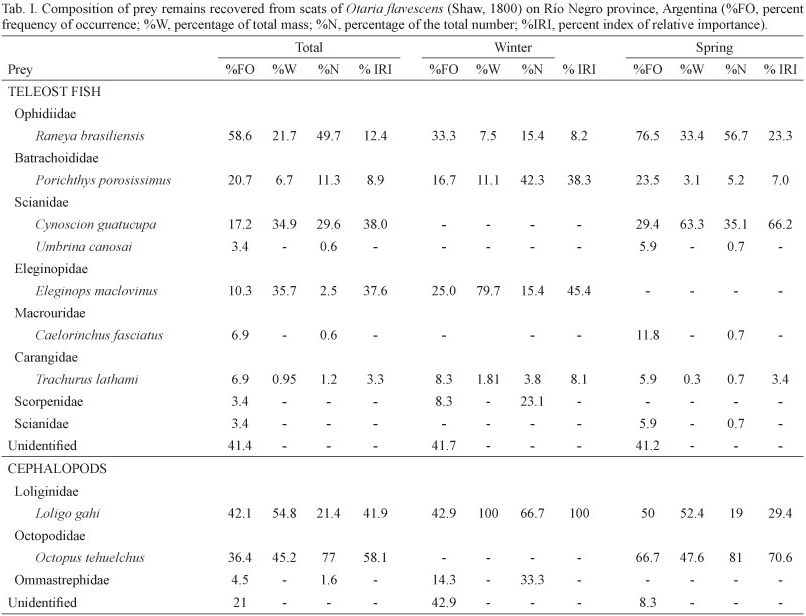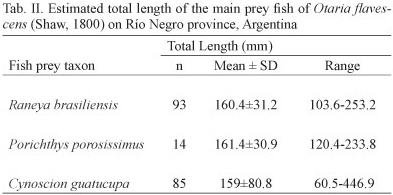The South American sea lion, Otaria flavescens (Shaw, 1800) population is steadily expanding along the Patagonian coast of Argentina in the last decades. However, little is known about the feeding ecology of the species in the area. The aim of this study was to analyze the food habits of O. flavescens from 91 scats collected at Río Negro province, during the winter and spring of 2005. Fish occurred in 96% of scats containing prey remains, followed by cephalopods (26%). Raneya brasiliensis (Kaup, 1856) was the most frequent and abundant species occurring in 58.6% of samples and constituting almost 50% of fish predated. Second in importance were Porichthys porosissimus (Cuvier, 1829) and Cynoscion guatucupa (Cuvier, 1830) in terms of occurrence (%FO 20.7) and numbers (29.6%) respectively. The squid Loligo gahi (d'Orbigny, 1835) was the most frequent cephalopod prey (42.1%), whereas Octopus tehuelchus (d'Orbigny, 1834) was the most abundant (77%). The higher amount and diversity of prey found in the spring in comparison with the winter season might be related to a higher feeding activity of seals or to a seasonal increase in food availability in the area.
Trophic ecology; Pinnipedia; fishes; cephalopods







